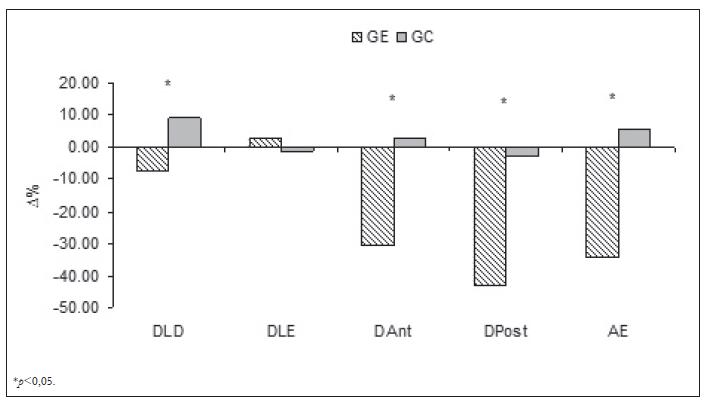Objective
: The aim of this study was to determine the effects of a physical activity program on static balance in elderly women.
Method
: The sample was randomly subdivided into an experimental group (EG; n=28; 65.64±2.36 years; BMI= 27.52±3.13) and a control group (CG; n=21; 66.84±2.31 years; BMI= 27.67±2.78). The EG participated in twice-weekly 60-minute sessions of physical activity for 12 weeks, with a perceived intensity level between 3 and 5 (CR10 scale). Static balance was evaluated using a baropodometric platform. Mean postural amplitude oscillations were measured in displacement from the center of pressure (COP), left lateral (LLD), right lateral (RLD), anterior (AD) posterior (PD) and elliptical (EA) area.
Results
: Repeated-measures analysis of variance showed a significant decrease in EG pre and post-test oscillations (p<0.05) in the COP, AD (∆=0.59;p=0.021), PD (∆=-0.91; p=0.001) and EA (∆=1.56; p=0.044) displacement. When comparing the groups, post-test amplitude oscillations in the COP, RLD (∆%=-7.40;p=0.006), AD (∆%=-30.63; p=0.007), PD (∆%=-42.96; p<0.001) and EA (∆%=-34.41;p=0.017) of the EG were significantly lower (p<0.05) than those of the CG. There were no significant LLD alterations.
Conclusion
: The results confirm that static balance improved with physical exercise in EG subjects.
Aging; Balance; Exercise; Physical Activity

